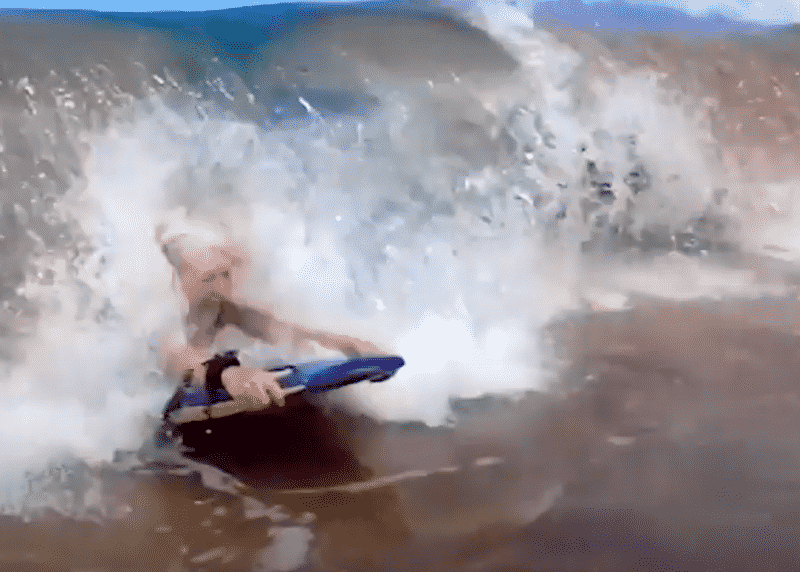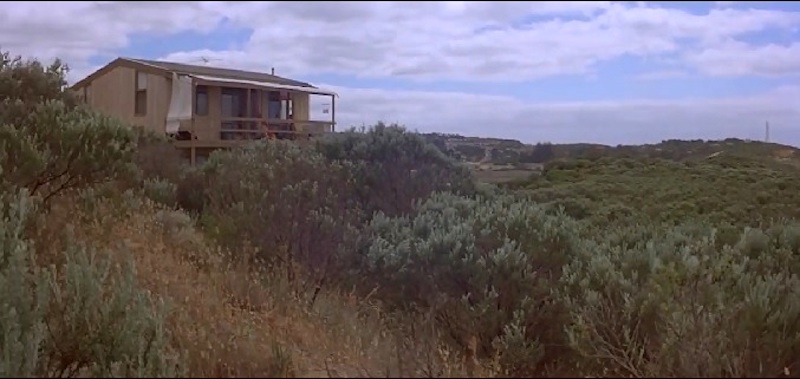And will use custom surfboard with curved deck to fit bag…
The story of Emirati surfer and Olympic hopeful Mohammad Rahma is a good one: ten years ago, when he was twenty-three and rehabbing a knee injury from rugby, Mo had a swing at surfing at the Wadi pool in the UAE.
You know the wave from the Globe surf flick Electric Blue Heaven. A wave described by Chas Smith as “a head-high, legitimately head-high, wave with a beefy shoulder and a lip.”
Seven years later, he was charging Mullaghmore (see below for his 2017 entry for wipeout of the year) and Nazaré. All while battling a severe case of ulcerative colitis.
“I used the bathroom from fifteen-to-twenty times a day, so my lifestyle was bad. I didn’t have any nutrition. I would feel fatigued, tired. Basically, I had no control over bowel movements. Every time I felt the urge to go to the toilet, I only had a few seconds to make it to the bathroom.”
After becoming the first pro surfer from the UAE, Mohammad competed in a number of QS events and the ISA World Championships.
However, the butterflies-in-the-stomach feeling was greatly exacerbated by the colitis.
“For example, when you compete your stomach already moves by itself. But with this, it was just like the worst. I still remember, I was super late to four heats because I was on the toilet. I actually went to the bathroom like super close to the beginning of a heat, then paddled out, then I had to run back to the bathroom…. It happened at the ISA World Games. They were calling me on the mic and I’m just in the bathroom. It happened a lot.”
Last year ,doctors found precancerous cells in his colon and determined it needed to be removed. This meant that Mo would have a bag on the outside of his body to act as his colon.
He immediately began to question if he would be able to surf again. He scoured the internet for information in hopes there was someone else out there who was able to surf with an colostomy bag. He found a surfer in the UK who had undergone the same procedure.
“He was like ‘Don’t worry as long as you don’t lay down too long. It’s ok for paddling quick and catching the wave…. You’ll be fine. It’s ok for you to do it.’ He said for the first few months it was difficult for him but now he’s used to it, so this is what gave me the courage. I was like ‘Cool, if this guy can do it I can do it,’ so I went in for the surgery.”
Doctors removed the majority of his colon, leaving behind a small portion of it, which now protrudes outside of the stomach. The bag secures onto that protrusion. Everything that would be coming out of his rear end, now ends up in the bag.
When asked what would happen if the bag ripped?
“So when your body digests food, before it becomes poop your body produces some chemicals, so that is what would come out. But usually now before I surf or do any sports I will not eat for a while beforehand just in case this happens, that way nothing comes out.”
In fact, it came out recently while surfing, “When it happened, I wasn’t wearing anything to support it and from now on I just wear a wetsuit. The wetsuit presses it in and keeps it stable.”
He also popped it while skateboarding recently, “I was dropping into the halfpipe. I ate shit so many times. I slammed straight into the ramp and the bag popped.”
It’s possible for Mo to get a procedure so he doesn’t have to use the bag, but it would require two additional surgeries and he would go back to having to use the bathroom between at least seven times a day.
“So far I’m happy with my bag. It’s a little uncomfortable surfing but I spoke to a few shapers to see if I can have a small curve where the bag is, to have less impact on the board. So I’m working with a shaper in South Africa (DGS Surfboards) to create something. My only concern is paddling. Otherwise, I’m just gonna go big wave surfing and get towed in.”








